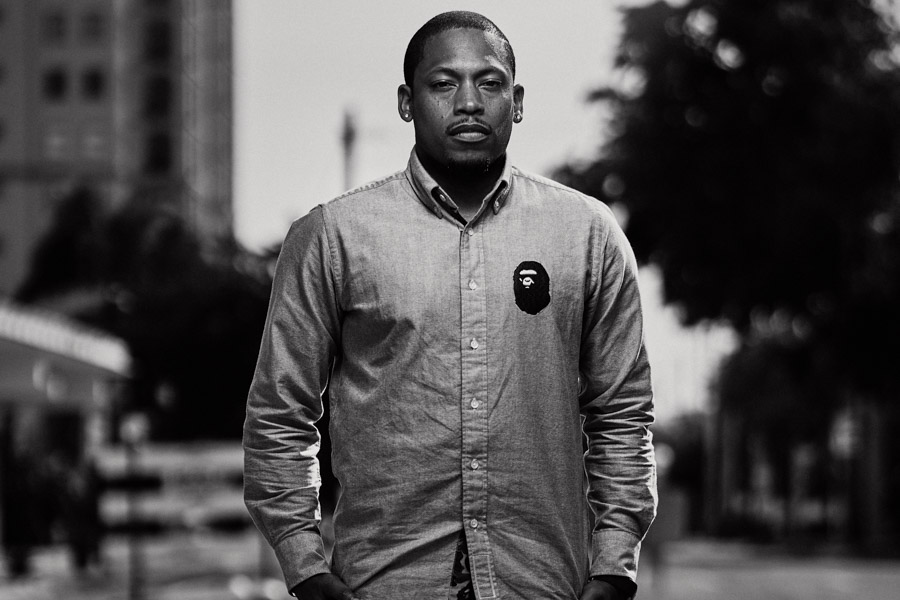AS COMMERICAL GROWTH ARRIVES IN AREAS LIKE NEWTOWN, the fear of gentrification arises in Sarasota. How do you bring economic vitality to a blighted region without hurting the population that’s lived there sometimes for generations? The Center for Architecture Sarasota in January invited Germane Barnes, a University of Miami lecturer, to speak with Sarasota about the complicated issue, and SRQ asked him about preserving culture while spurring growth. He’s got some experience with the topic after helping revitalize the South Florida community of Opa-Locka, where he continues to work with the Community Development Corporation helping ensure economic growth in the North Miami community benefits residents new and established alike.

PHOTOGRAPHY BY WYATT KOSTYGAN.
SRQ: How in places like Opa-Locka have you more successfully avoided gentrification of an area? Germane Barnes My idea is centering around the local economy and giving a voice to those who live there. That’s typically the way I tackle the issue of gentrification. People who live and have grown up 30 years there know the area, all the way up to community organizers. If you get them at council meetings, they get a stake in their own future, and that makes it easier to work as a designer and an architect. If you do that, your suggestions are not falling on deaf ears and you are not working without parameters. Projects without parameters are the hardest ones. When constituents are active in a process, it makes it infinitely easier to deliver on your goals. Then people can see how you can have a third of the crime in the area, or see it is time for a rebranding. It happened while I was there (in Opa-Locka). You want to make people feel a part of the team.
Why is public art a useful tool in redeveloping an area? It’s no different than a restaurant or park. You want to give a reason to make people visit a community or neighborhood. Everybody wants to Instagram or Snapchat something these days. Art makes people more apt to come visit your area. In Opa-Locka we installed art projects, and had artist Hank Willis Thomas do something. Now people come to Art Basel and visit the area who never would visited before, but they come just to see that art. When we started this, we would get people in a room and maybe 2 or 3 percent had ever heard of Opa-Locka. But I just did this again a month ago and nearly half of the people had not only heard of the neighborhood but had been there. So art is one of the things that can make people living in the neighborhoods feel empowered, and can make it worth other people’s time to visit. And it can allow them to see a neighborhood’s history, culture and character and help stimulate local economy.
How do you make sure that economic boost helps existing businesses and not just new ones that move in? You have to use the local economy and help push local businesses. If you see a fried chicken stand or a barbeque hut around the corner, those are gems to people who know the area and frequent them. In Opa-Locka there is a restaurant called Crabman 305, and only people in the area knew it, but then a couple famous people drove through the area and drive in, and now its Facebook page has 300,000 followers and it has people lined out the door. One of the things we’ve done, we’ve revamped our comprehensive plan and made developer agreements more stringent. A lot of times you find what happens is local commissioners get so excited about development to the detriment of people already there. We want a Starbucks, so we give incentives and make this an unlivable place for low-income people. My role on the [Opa-Locka] planning council is to vet development agreements to see what the city is offering to make sure it is not detrimentally affecting people in the area. You have to make [local businesses] a part of the conversation anytime have new development happen. You advertise to the neighborhood, but you also personally let Crabman 305 know what’s happening so they are there.
What first interested you in the subject of gentrification? I would say it has to do with the areas where I’ve worked and where I’ve lived. Growing up, specifically in Chicago, there was a lot of segregation in the way the city is outlined and the way the city is perceived. That sort of began that journey into neighborhood redevelopment. Then I lived in South Africa for a bit, where there were similar ideas of living in an urban core and working in underprivileged areas. That extended to Los Angeles, where this is always around. I never formally acknowledged
I was pursuing this subject.








